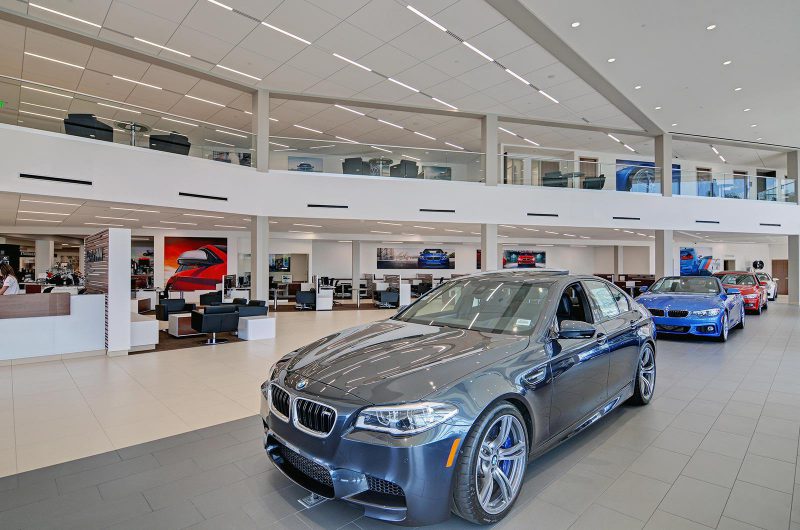The Fresh York Times
July 6, 2017
For almost three months, Tesla reigned as the most valuable automaker in the nation, ahead of both General Motors and Ford Motor, thanks to a remarkable run-up in its stock this year. It seemed its chief executive, Elon Musk, could do no wrong.
But a spate of negative news this week has brought the electric-car maker’s many challenges into concentrate, especially its ambitious plans to ramp up production of its very first mass-market suggesting, the Model Trio, which embarks rolling off the assembly line on Friday.
With investors shying away, Tesla has seen its shares fall by almost seventeen percent since Monday’s intraday high, to $308.89, including a Five.6 percent drop on Thursday. That diminished the company’s market capitalization to $50.7 billion, according to Bloomberg, and put G.M. ahead once again, at $52.6 billion.
Most critical to Tesla’s troubles was a fresh, slower timetable for the Model three introduction, and a separate acknowledgment of problems manufacturing battery packs, a critical component of its cars, in the 2nd quarter, said David Whiston, an analyst at Morningstar.
“The market is penalizing them harshly for that,” Mr. Whiston said.
It may be stiffer for Tesla to pass G.M. a 2nd time. Auto sales in the United States are slowing over all, and Tesla is not yet a significant player in China, the world’s largest auto market. In the 2nd quarter, Tesla produced more cars than it delivered to customers, causing some analysts to question whether request for current models — the Model S sedan and the Model X, a sport-utility vehicle — is reaching a plateau.
While Tesla is by far the most successful producer of battery-powered electrical cars, analysts believe traditional automakers will catch up fairly soon. This week, Volvo, the Swedish company, stole some of Tesla’s thunder by telling that all its models would be hybrid or fully electrified vehicles by 2019.
With established manufacturers expanding their electrified options, “Tesla will face intense competition by the next decade,” Brian Johnson, a financial analyst at Barclays, wrote in a note to clients.
But by far the thickest concerns are related to the Model Three.
Until now, the company has produced the Model S and Model X, which can sell for $70,000 and up, in relatively petite numbers. In 2016, Tesla made about 85,000 vehicles. But the Model three will be priced at toughly $35,000 and is aimed at a broader range of buyers. With the Model three in the lineup, Tesla expects to sell about 500,000 cars a year by 2018.
Last year, Mr. Musk predicted that Tesla would sell about 100,000 Model 3s this year. But late on Sunday, outlining a production plan on Twitter, he said the company expected to make thirty this month, one hundred in August, and 1,500 in September. He expected production to climb to about 20,000 cars in December. That would leave it well brief of 100,000.
Concern over Model three production was compounded when the company said its giant battery plant in Nevada had struggled to produce enough battery packs.
“Up to now, Tesla has had little practice with volume production,” Axel Schmidt, managing director of the automotive practice at Accenture, a large consulting rock-hard, said in an email. Ramping up Model three production “remains a giant challenge,” he said.
The slump in Tesla’s share price halts a remarkable surge for the company, in which its stock rose from a little over $180 in November to more than twice that recently.
A year ago, Tesla stock was shaken by news that an possessor of a Model S was killed when his car, operating in the company’s self-driving mode known as Autopilot, failed to see a tractor-trailer crossing a highway in Florida.
The crash raised questions about the reliability of the technology and about whether Tesla had overstated its capability in its marketing, and even in using the name Autopilot. Federal agencies opened investigations, including one to determine if there was a safety defect in Autopilot.
The stock price languished even after Mr. Musk laid out an updated “master plan” for the company, with a pledge to expand beyond electrical cars into battery-powered pickups, semi-trailer trucks and buses, and to equip them with advanced self-driving systems.
But this year, investors began focusing on the introduction of the Model three and Mr. Musk’s certain prediction that Tesla would be able to increase sales fivefold next year.
Tesla raised $1 billion in stock and debt offerings to bolster its coffers in advance of the Model three introduction. The National Highway Traffic Safety Administration concluded its investigation of the fatal crash and found no defects in Autopilot.
April brought more good news: a strong leap in vehicle production in the very first quarter, and a fresh surge in the stock price that shoved Tesla’s market value to $48 billion, surpassing the market capitalization of Ford Motor. The run continued, and on April Ten, the stock surged to $312.39.
That made Tesla more valuable than General Motors, a company that last year produced more than nine million vehicles and earned $9.Four billion. Tesla, by comparison, produced about 85,000 cars last year and reported losses in most of the last several quarters. In the very first quarter of this year, it lost $397 million, compared with a loss of $282 million in the same period a year earlier. The company’s revenue more than doubled, however, to $Two.7 billion.
